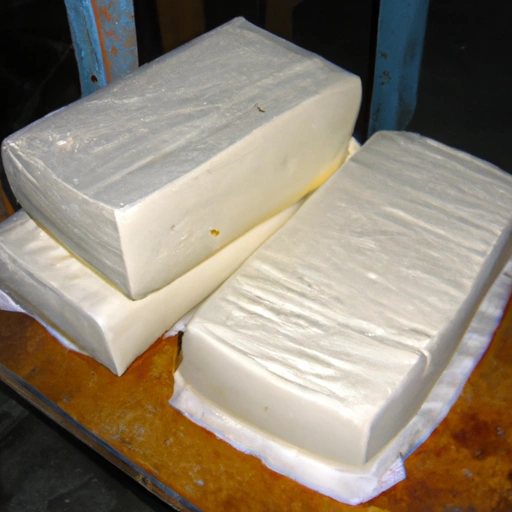Paneer
Description

Paneer is a type of fresh, non-melting cheese common in South Asian cuisine, particularly in Indian, Pakistani, Afghan, Nepali, and Bangladeshi dishes. It is made by curdling milk with a food acid such as lemon juice, vinegar, or citric acid, and then draining the curds from the whey. The curds are then pressed into a compact block under heavy weight to expel additional whey and firm up the cheese. Paneer has a mild, milky flavor, a dense crumbly texture, and does not contain rennet, making it a popular choice for vegetarians and those who prefer meat-free diets.
Common uses
In culinary practices, paneer is known for its ability to absorb flavors and is used in a multitude of dishes ranging from appetizers to main courses and even some desserts. It can be grilled, fried, sautéed, or simmered in gravies, making it a highly adaptable ingredient suitable for various cooking styles and palate preferences.
Nutritional value
Calories
A 100-gram serving of paneer contains approximately 265 calories (1,108 kJ).
Protein
This serving size offers about 18-20 grams of protein, making paneer a significant source of this essential macronutrient.
Fat
Paneer has a fat content of around 20-25 grams, with the majority being saturated fat.
Carbohydrates
The carbohydrate content is minimal, typically less than 3 grams per 100 grams.
Vitamins
Paneer is a good source of B-complex vitamins, particularly vitamin B12.
Minerals
It contains essential minerals such as calcium, providing roughly 208 mg (0.0073 oz) or 21% of the daily recommended intake, and phosphorus.
Health benefits
As a rich source of protein and calcium, paneer can contribute to muscle development and bone health. Its protein content makes it a filling food, which may aid in weight management when consumed in moderation. The presence of B vitamins helps in various metabolic processes, and its calcium is essential for maintaining healthy bones and teeth.
Potential risks
Due to its high saturated fat content, excessive consumption of paneer may not be advisable for individuals with heart conditions, high cholesterol, or those looking to reduce their saturated fat intake. Additionally, as a dairy product, paneer may not be suitable for those with lactose intolerance or dairy allergies.
Common recipes
Paneer is a staple in many vegetarian dishes such as Paneer Butter Masala, Palak Paneer (spinach and paneer), and Matar Paneer (peas and paneer). It's also used in snacks like Paneer Tikka and in rice dishes like Paneer Biryani.
Cooking methods
Paneer can be grilled, pan-fried, or cooked in curries. It holds its shape well and has a unique ability to soak up the flavors of spices and herbs.
Pairing with other ingredients
Paneer pairs beautifully with robust spices like garam masala, cumin, and turmeric, as well as with milder ingredients like spinach, tomatoes, and peas. It also complements both rice and bread, making it a versatile addition to many meals.
Summary
Paneer is a fresh cheese with a rich history in South Asian cuisine. Its nutritional profile makes it a valuable food item, particularly for vegetarians. When used judiciously, it can be a healthy part of a balanced diet. Its culinary flexibility allows it to be included in a wide range of recipes, making it a favorite among cooks and food enthusiasts worldwide.